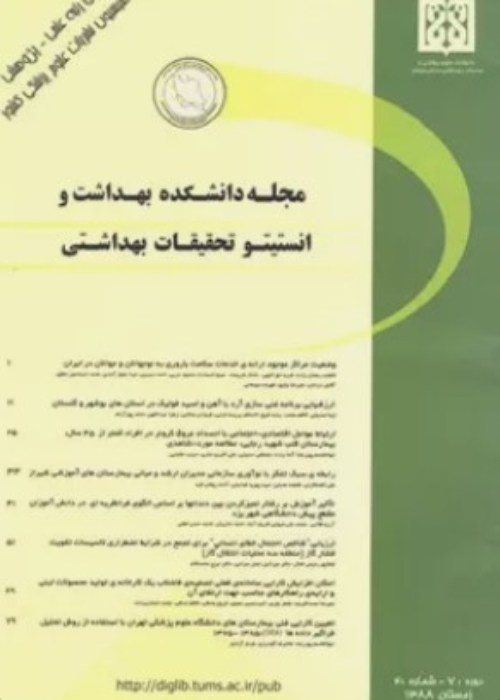Priorities of health risk behaviors among high school students in the public schools in 5th restrict of Tehran: A qualitative study
Author(s):
Abstract:
Background And Aim
Health-risk behaviors are socially constructed and influenced by the given culture. Therefore, the health-risk behaviors are prioritized differently in diverse cultures. In this study, we aimed to explore the priority of health risk behaviors among high school students in Tehran. Materials And Methods
In this qualitative study using rapid assessment approach, we interviewed 130 individuals who voluntarily participated in the focus group discussions (FGDs, n=17). They were students (n=9 FGDs), the parents (n=5 FGDs), and the teachers (n=3 FGDs). Four of the principals were individually interviewed. Interviews focused on (1) perceptions about and description of healthy or unhealthy behaviors; (2); priority of health risk behaviors in adolescents (3) perceptions and beliefs about the formation of the risk behaviors among adolescents. All sessions were embarked on the public schools located in the area five in West Tehran. After obtaining a written consent form from the participants, primary investigators and three of the trained facilitators (male and female) conducted the sessions. We employed content analysis to extract the major themes and sub-themes. The rigor of the data was obtained. Results
Addiction, risky sexual behavior, and social misconduct ion (aggression) were identified as the main concerns for the boys. Risky sexual behavior, early marriage, eating unhealthy habits, physical motionless, and fear of the future (job, education, marriage) were identified as the main health-risk behaviors for the girls. Conclusion
According to our findings, health risk behaviors are classified differently for boys and girls. However, sexual risk behaviors are common findings for both groups. The adolescent's risky behaviors are formed throughout their socialization and seriously influenced by the given culture. Understanding of gender schema was identified as an important factor in the way participants do priority health-risk behaviors of young people. Comprehensive and holistic health education and promotion programs targeting adolescents as well as training programs for parents are suggested.Keywords:
Language:
Persian
Published:
Scientific Journal of School of Public Health and Institute of Public Health Research, Volume:12 Issue: 2, 2014
Pages:
77 to 88
magiran.com/p1328291
دانلود و مطالعه متن این مقاله با یکی از روشهای زیر امکان پذیر است:
اشتراک شخصی
با عضویت و پرداخت آنلاین حق اشتراک یکساله به مبلغ 1,390,000ريال میتوانید 70 عنوان مطلب دانلود کنید!
اشتراک سازمانی
به کتابخانه دانشگاه یا محل کار خود پیشنهاد کنید تا اشتراک سازمانی این پایگاه را برای دسترسی نامحدود همه کاربران به متن مطالب تهیه نمایند!
توجه!
- حق عضویت دریافتی صرف حمایت از نشریات عضو و نگهداری، تکمیل و توسعه مگیران میشود.
- پرداخت حق اشتراک و دانلود مقالات اجازه بازنشر آن در سایر رسانههای چاپی و دیجیتال را به کاربر نمیدهد.
In order to view content subscription is required
Personal subscription
Subscribe magiran.com for 70 € euros via PayPal and download 70 articles during a year.
Organization subscription
Please contact us to subscribe your university or library for unlimited access!


